McLaren: Adjustable rear brake ducts – system development
A couple days ago, I published a description of a new brake and tyre management system designed by McLaren. It was based on an article written by Craig Scarborough, who described it in detail. There was a suggestion that the system was in use last season, so I decided to investigate how and when they began to develop it.
Looking at pictures taken during winter testing in Jerez, I spotted the new ENKEI wheel rim, with 29 holes on its inner circumference.
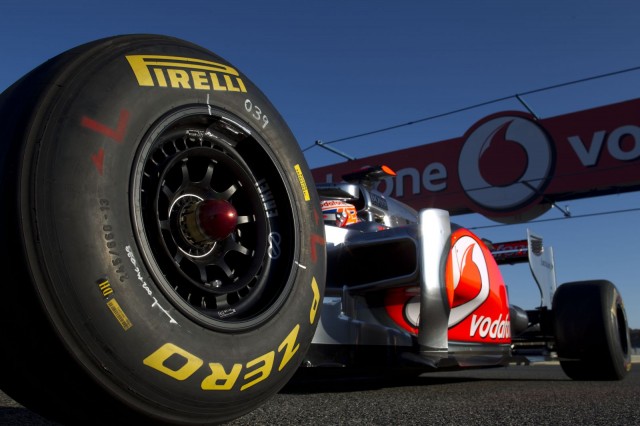
The rim with 29 holes was used for the first time during winter testing in Jerez (photo Vodafone McLaren Mercedes)
Due to the importance of the wheel rim to the system as a whole, I believe McLaren could have indeed been testing the entire system, but it may not have been as efficient as it is now.
Craig Scarborough also mentioned that a small hole, located near the fuel filler flap, allows access to a remote adjustment cable, allowing a mechanic to change a rear brake drum window size. This important detail allows the team to manage brake and tyre temperature during a race, assuming that is indeed the purpose of the system. Having access to hi-res images, I was able to trace the evolution of the system’s development.
Winter testing 2012 – no signs of a hole in the MP4-27 bodywork that may be used to adjust the system.
There may be two reasons why McLaren didn’t use the system in 2012 testing. Either the system was not ready at that stage, or they were not able to evaluate it in their busy testing schedule.
In the first race of the 2012 season, the first evidence appears of the system to be used. On the engine cover, close to the fuel filler flap, you can see small round decals covering a hole.
During Malaysia, the same evidence appeared again. On the engine cover, close to the fuel filler flap, a similar small round decal is covering the same hole.
The evidence changed in China with the hole now appearing open and outlined with a bright red decal.
As you can see, McLaren used the system for the first time in China. It is difficult to identify significant gains, just from analyzing lap times, but there is definitely an advantage to using the system. Current “old school” methods of utilizing sticky tape to block the brake duct inlet doesn’t allow as fine of a range of adjustment and is impossible to fine-tune during a 3 to 4 second pit stop.
Adjusting the system is quite simple. Adjustment only requires one mechanic using a rotary electromechanical pre-programmed tool, similar to what is used in front wing adjustment. Here is the only picture found, showing a mechanic using a tool to make an adjustment in the access hole during a pit stop.
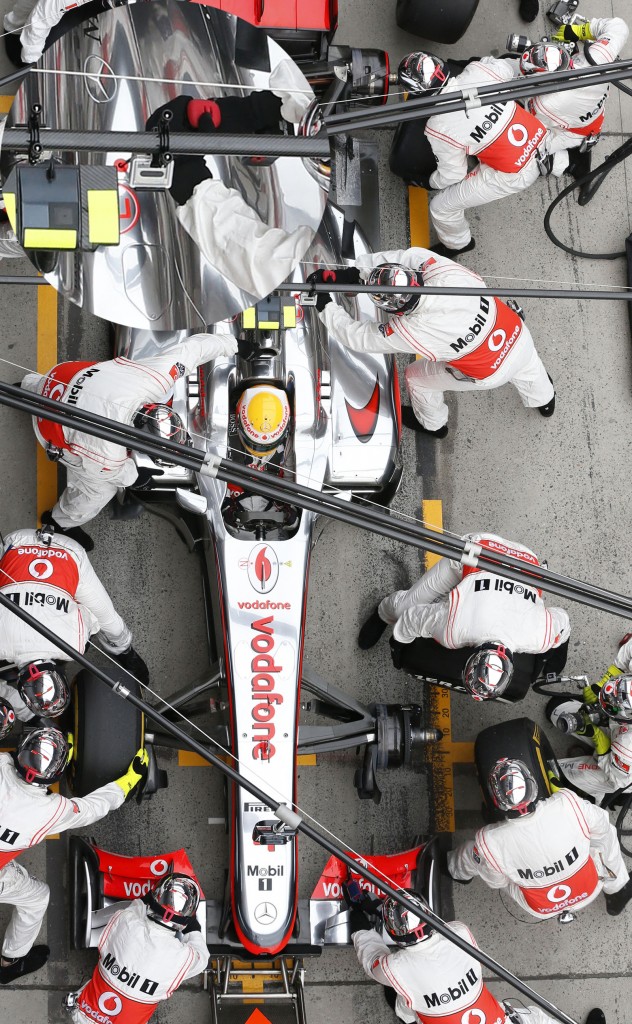
Mechanic adjusting McLaren rear brake ducts during pit stop - GP Chin 2012 (fot. Vodafone McLaren Mercedes)
I wasn’t able to find any evidence suggesting that McLaren is using the same trick on the front brakes.
The only thing that I spotted was in Malaysia where they used sticky tape to block the front brake duct inlet at the beginning of the race, but by the end of the race, the tape had disappeared.
Big thanks for @brianjee for his help!

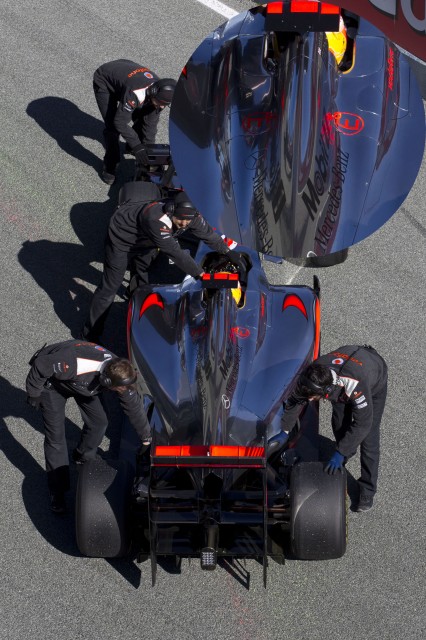
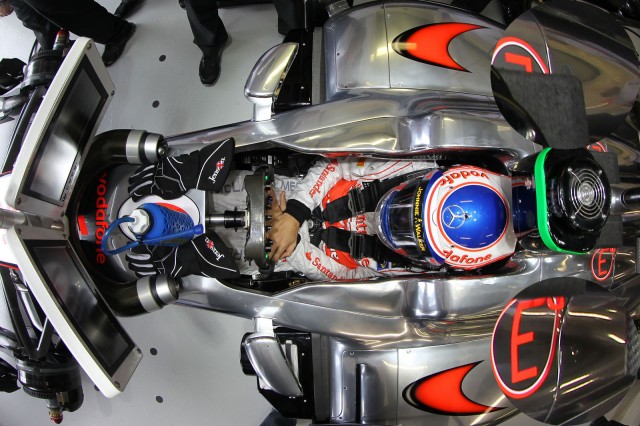
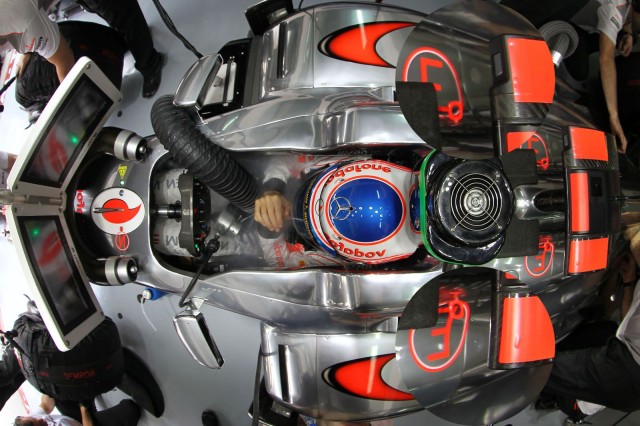
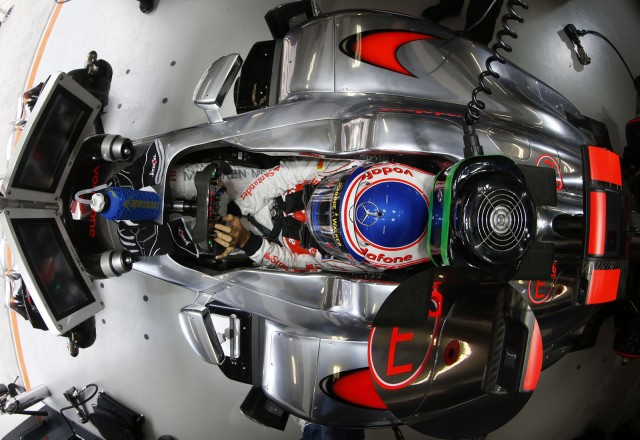
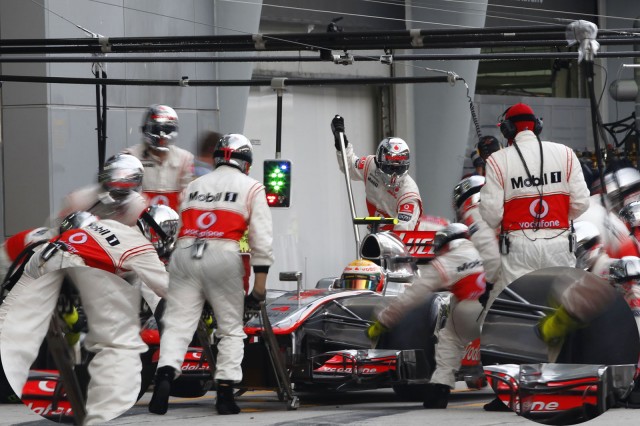
Najnowsze komentarze